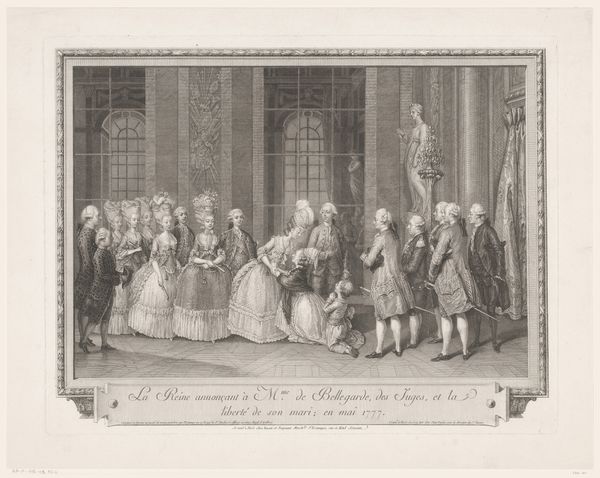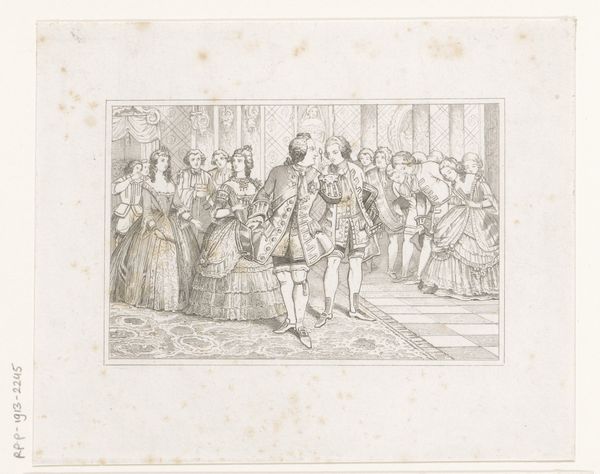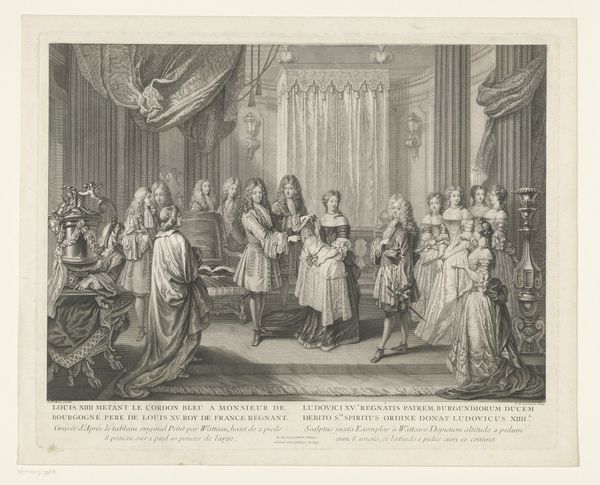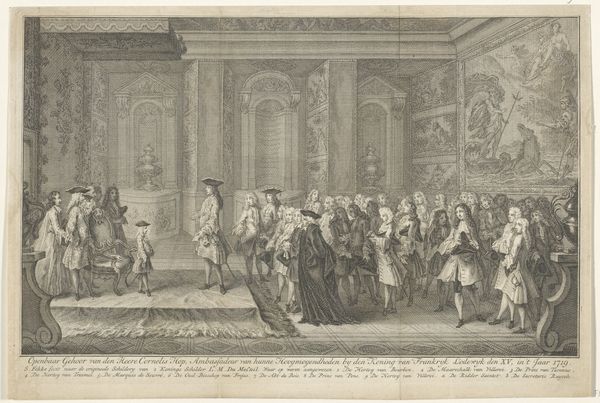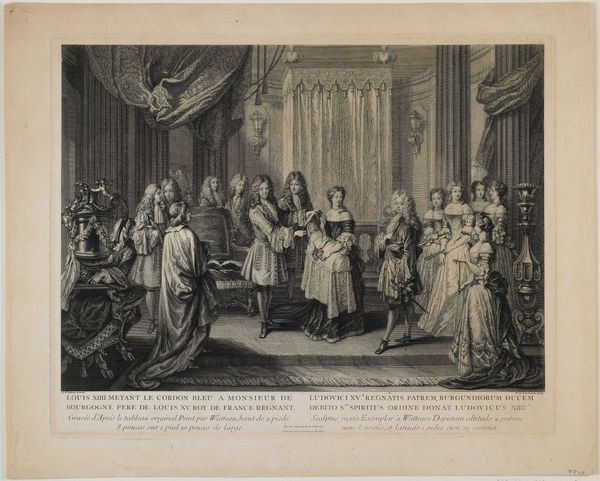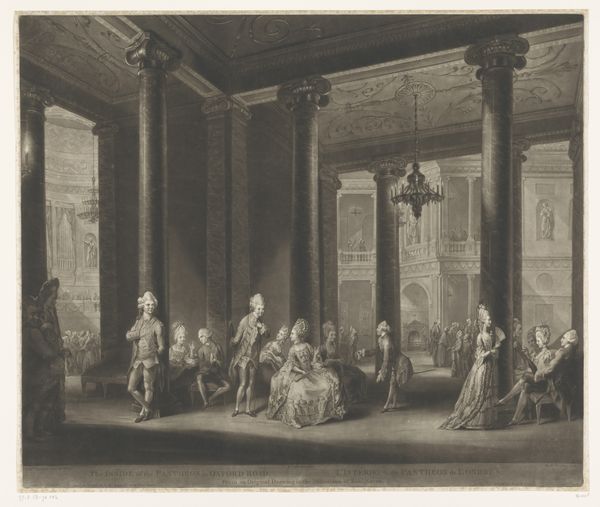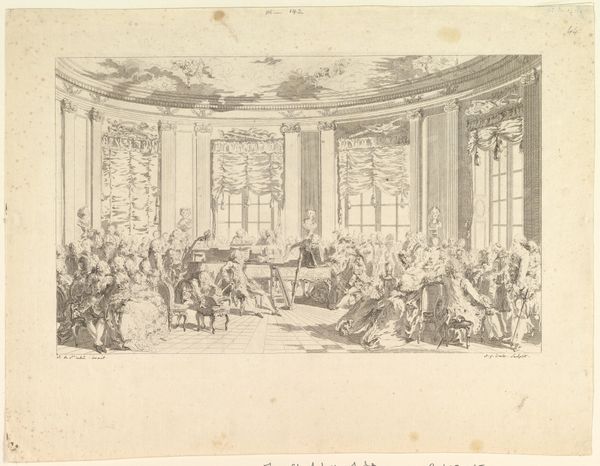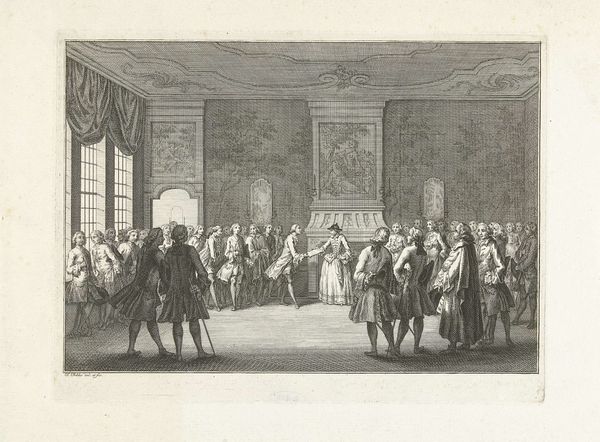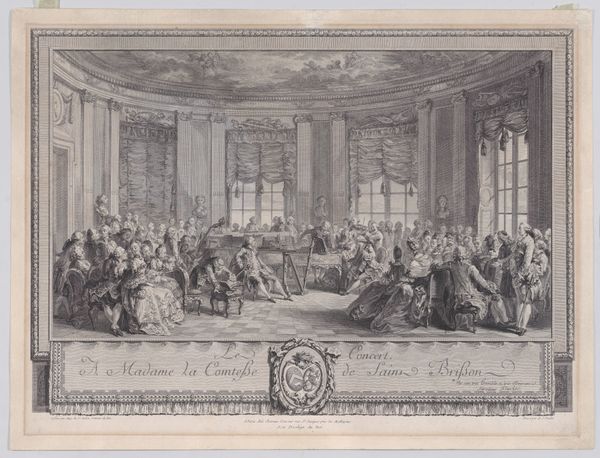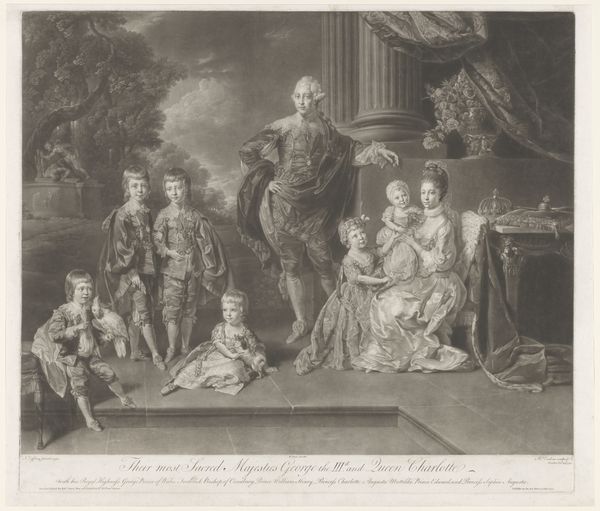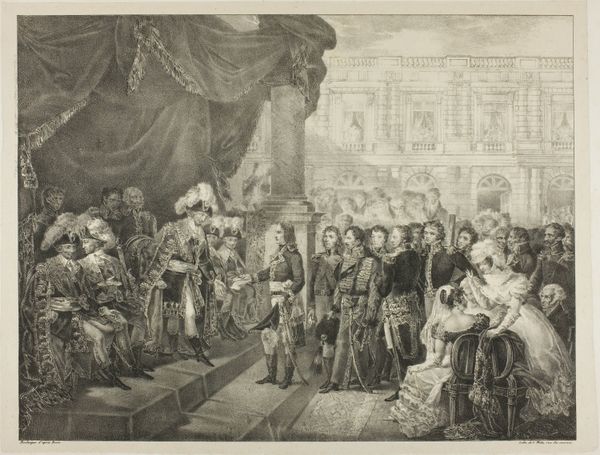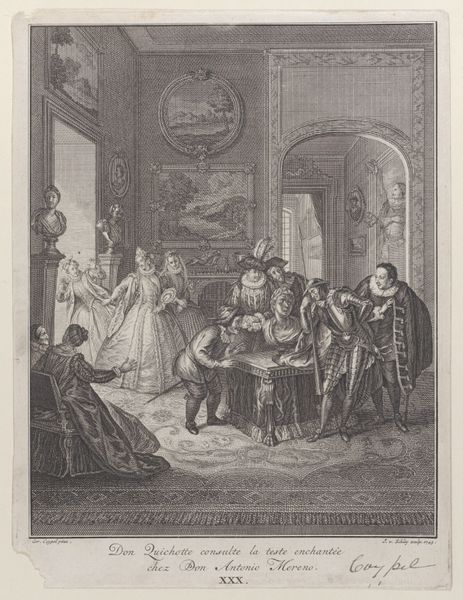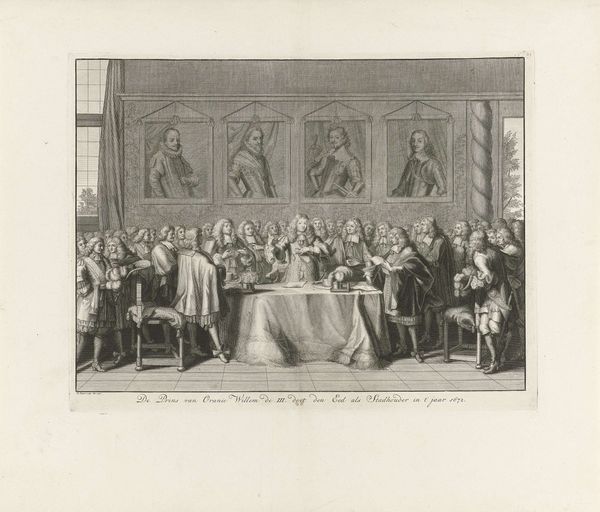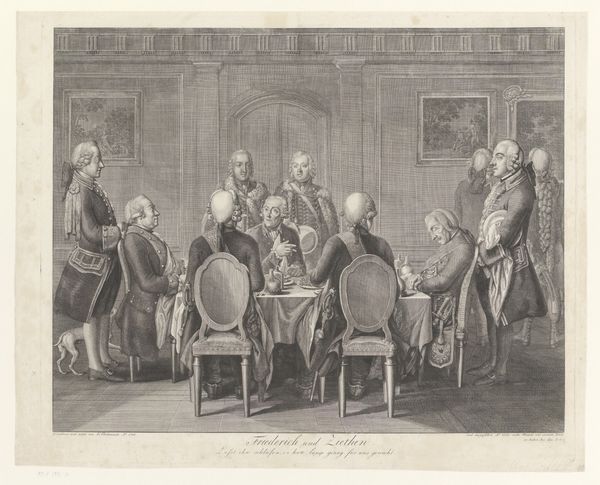
Aankondiging van de vrijheid van de man van Mme. de Bellegarde door de koningin 1779
0:00
0:00
Dimensions: height 365 mm, width 480 mm
Copyright: Rijks Museum: Open Domain
Editor: Here we have Antoine Jean Duclos's "Aankondiging van de vrijheid van de man van Mme. de Bellegarde door de koningin," an engraving from 1779. The scene is so elegant, almost absurdly so. Everyone looks stiff, trapped in their finery. What's your take on this elaborate display? Curator: Ah, yes! A beautiful snapshot into the strange theater of power. Notice how everyone's a player on this stage – even the sculpture of, perhaps, Minerva overlooking the event. Freedom "announced" – what a concept, right? Like freedom could ever be gifted by the powerful. And, look at the density of line – almost claustrophobic! What does all this powdered artifice say about late 18th century France? Editor: So it's less about liberation and more about control? This theatrical performance of power rather than genuine freedom? Curator: Precisely! It’s like a gilded cage – beautiful, but still a cage. The Rococo style itself, with its flourishes and ornamentation, speaks to that gilded quality, doesn't it? It smothers any true raw emotion in layers of refined, often ridiculous, ritual. Tell me, who truly benefits from this elaborate dance? Editor: Well, certainly not the woman kneeling before the Queen! It highlights the distance between those who possess power and those who seek it, which is a depressing realization. It’s also strangely unsettling – a freedom granted is not freedom earned. Curator: Absolutely. It leaves one wondering about the conditions, about the debts incurred! See, art is like a mirror – it shows us what we are, sometimes warts and all, sometimes in costume. Now, doesn’t it make you itch to dismantle such spectacles? Editor: It does. All that ornamentation feels suffocating. I’m ready for a revolution in aesthetics and society! Curator: Then Duclos, unwittingly perhaps, has served his purpose centuries on.
Comments
No comments
Be the first to comment and join the conversation on the ultimate creative platform.
